 |
|
|
| OR |
|
|

|
Books Featuring
Burckhardt |
|
|
|
|
|
|
|
|
|
|
|
|
|
|
|
|
|
|
|
|
|
|
|
|
|
|
|
|
|
|
|
|
|
|
|
|
|
|
|
Titus Burckhardt’s life and work
|
|
This site includes Titus Burckhardt’s biography, photos, online articles, slideshows, bibliography, links, and more.
|
|
|
|
|
|
|
Titus Burckhardt, a German Swiss, was born in Florence on October 24, 1908 and died in Lausanne on January 15, 1984. He devoted his life to the study and exposition of the different aspects of Wisdom and Tradition. In the age of modern science and technocracy, Titus Burckhardt was one of the most remarkable of the exponents of universal truth, in the realm of metaphysics as well as in the realm of cosmology and of traditional art. In a world of existentialism, psychoanalysis, and sociology, he was a major voice of the philosophia perennis, that "wisdom uncreate" that is expressed in Platonism, Vedanta, Sufism, Taoism, and other authentic esoteric or sapiential teachings. In literary and philosophic terms, he was an eminent member of the "traditionalist" or "perennialist" school of 20th century thinkers and writers.
The work of [the Perennialist pioneers] Guénon and Schuon was… taken up by two illustrious continuators: the Indian Ananda K. Coomaraswamy (1877- 1947) who wrote in English, and the German-Swiss Titus Burckhardt, who wrote in both German and French.…
Although he first saw the light of day in Florence, Burckhardt was the scion of a patrician family of Basle. He was the great-nephew of the famous art-historian Jacob Burckhardt and the son of the sculptor Carl Burckhardt. Titus Burckhardt was Frithjof Schuon's junior by one year, and they spent their early schooldays together in Basle around the time of the First World War. This was the beginning of an intimate friendship and a deeply harmonious intellectual and spiritual relationship that was to last a lifetime.
Burckhardt's chief metaphysical exposition, beautifully complementing the work of Schuon, is An Introduction to Sufi Doctrine. This is an intellectual masterpiece which analyzes comprehensively and with precision the nature of esoterism as such. It begins by making clear, by a series of lucid and economical definitions, what esoterism is and what it is not, goes on to examine the doctrinal foundations of Islamic esoterism or Sufism, and ends with an inspired description of "spiritual alchemy", or the contemplative path that leads to spiritual realization. This work clearly established Burckhardt as the leading exponent, after Schuon, of intellectual doctrine and spiritual method. On the specific question of the perennialists' use of the term "Intellect" (Intellectus = Spiritus, not mens or ratio), see the quotation from Meister Eckhart on p. x.[1]
Burckhardt devoted a large portion of his writings to traditional cosmology, which he saw in a sense as the "handmaid of metaphysics". He formally presented the principles at stake in a masterly and concise article "The Cosmological Perspective", first published in French in 1948 and now constituting a chapter in the present volume. Much later—in a series of articles published in both French and German in 1964—he covered the cosmological ground very fully indeed, and also made many detailed references to the main branches of modern science. All of these articles are included in the present book, in the section entitled "Traditional and Modern Science".
Not unconnected with his interest in cosmology, Burckhardt had a particular affinity with traditional art and craftsmanship and was skilled in the evaluation of traditional architecture, iconography, and other arts and crafts. In particular, he dwelt on how they had been—and could be—turned to account spiritually, both as meaningful activities which by virtue of their inherent symbolism harbor a doctrinal message, and above all as supports for spiritual realization and means of grace. Ars sine scientiâ nihil. Here of course it is a case of scientia sacra and ars sacra, these being the two sides of the same coin. This is the realm of the craft initiations of the various traditional civilizations, and specifically of such things, in the Middle Ages, as operative masonry and alchemy. Indeed Burckhardt's principal work in the field of cosmology was his full-length book Alchemy: Science of the Cosmos, Science of the Soul, a brilliant presentation of alchemy as the expression of a spiritual psychology and as an intellectual and symbolic support for contemplation and realization.
Burckhardt's main work in the field of art was his Sacred Art in East and West, which contains masterly chapters on the metaphysics and esthetics of Hinduism, Buddhism, Taoism, Christianity, and Islam, and ends with a useful and practical insight into the contemporary situation entitled "The Decadence and Renewal of Christian Art". Many extracts from this book are included here.
During the fifties and sixties Burckhardt was the artistic director of the Urs Graf Publishing House of Lausanne and Olten. His main activity during these years was the production and publication of a whole series of facsimiles of exquisite illuminated medieval manuscripts, especially early Celtic manuscripts of the Gospels, such as the Book of Kells and the Book of Durrow (from Trinity College, Dublin) and the Book of Lindisfarne (from the British Library, London). This was pioneer work of the highest quality and a publishing achievement which immediately received wide acclaim both from experts and the wider public.
His production of the magnificent facsimile of the Book of Kells brought him a remarkable encounter with Pope Pius XII. The Urs Graf Publishing House wished to present a copy of the edition to the saintly and princely Pope, and it was decided that there could be no better person to effect the presentation than their artistic director Burckhardt. In the eyes of the Pope, Burckhardt was ostensibly a Protestant gentleman from Basle. The Pope granted him a private audience at his summer residence at Castelgandolfo. When, in the audience chamber, the white-clad figure of the Pope suddenly appeared, he welcomingly approached his visitor and said to him in German: "Sie sind also Herr Burckhardt?" ("So you are Herr Burckhardt?"). Burckhardt bowed and, when the Pope offered him his hand bearing the Fisherman's Ring, he respectfully took it in his. As a non-Catholic, however, he kissed, not the ring (as is the custom amongst Catholics), but the Pope's fingers. "Which the Pope smilingly permitted," Burckhardt adds.
Together they talked about the Dark Ages and about the surpassingly beautiful manuscripts of the Gospels that had been so lovingly and so finely produced during them. At the end of the audience the Pope gave his blessing: "From my heart I bless you, your family, your colleagues, and your friends."
It was during these years with the Urs Graf Publishing House that Burckhardt presided over an interesting series of publications with the general title of Stätten des Geistes ("Homesteads of the Spirit"). These were historical-cum-spiritual studies of certain manifestations of sacred civilization, and covered such themes as Mount Athos, Celtic Ireland, Sinai, Constantinople, and other places. Burckhardt himself contributed three books in the series: Siena, City of the Virgin, Chartres and the Birth of the Cathedral, and Fez, City of Islam. Siena is an enlightening account of the rise and fall of a Christian city which, architecturally speaking, remains to this day something of a Gothic jewel. Most interesting of all, however, is the story of its saints. Burckhardt devotes many of his pages to St. Catherine of Siena (who, amongst other things, was a powerful influence on the Pope of her day) and to St. Bernardino of Siena (who was one of the greatest Catholic practitioners—and teachers—of the invocatory mode of prayer, based on the saving power of the Holy Name). Chartres is the story of the religious "idealism" (in the best sense of the word) which lay behind the conception and practical realization of the medieval cathedrals—the still extant monuments of an age of faith. In Chartres, Burckhardt expounds the intellectual and spiritual contents of the different architectural styles—distinguishing in this respect not merely between the Gothic and the Romanesque, but even between the different varieties of the Romanesque. It is a dazzling example of what is meant by intellectual discernment or discrimination.
One of Burckhardt's several masterpieces is undoubtedly his Fez, City of Islam, first-place winner of the 13th Book of the Season Award in the area of “History”. As a young man, in the 1930s, he spent a few years in Morocco, where he established intimate friendships with several remarkable representatives of the as yet intact spiritual heritage of the Maghrib. This was obviously a formative period in Burckhardt's life, and much of his subsequent message and style originates in these early years. Already, at the time concerned, he had committed much of his experience to writing (not immediately published), and it was only in the late 1950s that these writings and these experiences ripened into a definitive and masterly book. In Fez, City of Islam, Burckhardt relates the history of a people and its religion—a history that was often violent, often heroic, and sometimes holy. Throughout it all runs the thread of Islamic piety and civilization. These Burckhardt expounds with a sure and enlightening hand, relating many of the teachings, parables, and miracles of the saints of many centuries, and demonstrating not only the arts and crafts of Islamic civilization, but also its "Aristotelian" sciences and its administrative skills. There is indeed much to be learnt about the governance of men and nations from Burckhardt's penetrating presentation of the principles behind dynastic and tribal vicissitudes —with their failures and their successes.
Close in spirit to Fez is another of Burckhardt's mature works, namely Moorish Culture in Spain. As always, this is a book of truth and beauty, science and art, piety and traditional culture. But in this book, perhaps more than in all others, it is a question of the romance, chivalry, and poetry of pre-modern life.
During his early years in Morocco, Burckhardt immersed himself in the Arabic language and assimilated the principal classics of Sufism (Islamic mysticism) in their original form. In later years, he was to share these treasures with a wider public through his translations of Ibn ‘Arabî [2] and Jîlî. [3] One of his most important works of translation was of the spiritual letters of the renowned 18th century Moroccan Shaikh Mulay al-‘Arabî ad-Darqâwî. [4] These letters constitute a spiritual classic and are a precious document of practical spiritual counsel.
Burckhardt's last major work was his widely acclaimed and impressive monograph Art of Islam. Here the intellectual principles and the spiritual role of artistic creativity in its Islamic forms are richly and generously displayed before us. With this noble volume, the unique Burckhardtian literary corpus comes to its end.
The above biography of Titus Burckhardt
was excerpted from William Stoddart's introduction to
The Essential Titus Burckhardt (World Wisdom, 2003)
NOTES
1. Editor's note. Here is the text to which Stoddart refers (i.e. "page x"):
Aliquid est in anima quod est increatum et increabile; si tota anima esset talis, esset increata et increabilis; et hoc est Intellectus.
There is something in the soul which is uncreated and uncreatable; if the whole soul were such, it would be uncreated and uncreatable; and this is the Intellect.
- Meister Eckhart 2. La Sagesse des Prophètes [Fusûs al-Hikam] (Paris: Albin Michel, 1955). 3. De l'Homme Universel [al-Insân al-Kâmil] (Lyons: Derain, 1953). 4. Letters of a Sufi Master [Rasâ‘il] (Bedfont, Middlesex, England: Perennial Books, 1969).
 |
|
Titus Burckhardt's books:
Articles by Titus Burckhardt in World Wisdom books
- “Sufism and Mysticism” in Universal Dimensions of Islam, edited by Patrick Laude
- “Modern Psychology” in Every Branch in Me: Essays on the Meaning of Man.
- “Traditional Cosmology and the Modern World”, in Science and the Myth of Progress, edited by Mehrdad Zarandi.
- “The Symbolism of Water”, in Seeing God Everywhere: Essays on Nature and the Sacred.
- “The Theory of Evolutionism”, in The Betrayal of Tradition: Essays on the Spiritual Crisis of Modernity, edited by Harry Oldmeadow.
- “The Royal Door” and “Christendom and Conservatism”, in Ye Shall Know the Truth: Christianity and the Perennial Philosophy, edited by Mateus Soares de Azevedo.
- “The Decadence and the Renewal of Christian Art”, in Every Man An Artist: Readings in the Traditional Philosophy of Art, edited by Brian Keeble.
- “Sufi Doctrine and Method”, in Sufism: Love and Wisdom, edited by Jean-Louis Michon and Roger Gaetani.
- “Rites”, in Pray without Ceasing: The Way of the Invocation in World Religions, edited by Patrick Laude.
- “Hindu Art”, in Light From the East: Eastern Wisdom for the Modern West, edited by Harry Oldmeadow.
- “An Introduction to Sacred Art” and “A Letter on Spiritual Method”, in The Underlying Religion: An Introduction to the Perennial Philosophy, edited by Martin Lings and Clinton Minnaar.
|
 |
|
|
 |

| Islamic Science | The Essential Titus Burckhardt (2003) | Burckhardt, Titus | | Islam, Science, Tradition |
|

|
|

| "Nature Can Overcome Nature" | The Essential Titus Burckhardt (2003) | Burckhardt, Titus | | Alchemy, Environment and Nature, Symbolism |
|

|
|

| The Spiritual Life - Christian | The Essential Titus Burckhardt (2003) | Burckhardt, Titus | | Christianity, Spiritual Life |
|

|
|

| The Ka'ba | Art of Islam, Language and Meaning: Commemorative Edition | Burckhardt, Titus | | Art, Islam |
|

|
|

| The Palio | Siena, City of the Virgin: Illustrated | Burckhardt, Titus | | Christianity |
|

|
|

This essay by Titus Burckhardt is a sort of primer on sacred art, covering many aspects of the production, value, and intent of sacred art, with many important points also made regarding the one who produces sacred art—namely, the artist.
| The Universality of Sacred Art | The online library of articles at religioperennis.org | Burckhardt, Titus | | Art |
|
|

|

The subject of Islamic art in various forms is the central topic of this article and the reader is given an in-depth analysis of the symbolism and meaning of this traditional art. The author’s goal is to approach the topic of this article without using the historical evidence of influence from other cultures as much as the historical background of how Islamic art reflects the original goals of that religion. Burckhardt also points out some of the problems of the approach that modern science takes towards Islamic art. The author also provides some intriguing comparisons between Islamic and Christian art and how the differences in form symbolically reflect differences in religious doctrine. Some of the specific subjects analyzed in this way include icons, or lack thereof, the architecture of mosques and basilicas, structural ornamentation and inscriptions within sacred structures.
| Perennial Values in Islamic Art | Studies in Comparative Religion, Vol. 1, No. 3. ( Summer, 1967) | Burckhardt, Titus | | Art |
|
|

|

Burckhardt examines the history and symbolism of the chess-board of its pieces. From its roots in India through its passages into Persia and into Europe the chess-board is both a military stratagem and a symbol of space and the universe, as well as a symbol of the nature of the soul and the relationship between will and fate.
| The Symbolism of Chess | Studies in Comparative Religion, Vol. 3, No. 2. ( Spring, 1969) | Burckhardt, Titus | | Symbolism |
|
|

|

Burckhardt begins his article with an interesting comparison of the Virgin Mary’s intelligence, which he considers the highest possible for humans with the seven sciences, which he claims are an “expression of so many faculties of the soul”. He continues to address these sciences and classifies them as grammar, logic, and rhetoric, as the first three, and arithmetic, music, geometry and astronomy respectively. Apparently these seven sciences, which do not of course fit the term of science as used today, are represented by the seven planets. Other correlations related to these sciences include their relation to numbers, as well as their representation on the door of Chartres Cathedral.
| The Seven Liberal Arts and the West Door of Chartres Cathedral | Studies in Comparative Religion, Vol. 3, No. 3. ( Summer, 1969) | Burckhardt, Titus | | Christianity |
|
|

|

Burckhardt comments on the symbolic importance of the image of the Heavenly Jerusalem, which first appeared in a medieval manuscript. He compares this image side-by-side with a drawing of the mandala of Vaikuntha, the home of the Hindu god, Vishnu. Also comparing relevant scriptural texts, Bruckhardt is more interested in the objective comparison of the two images/texts than in drawing conclusions as to why and how such similarities came into existence.
| The Heavenly Jerusalem and the Paradise of Vaikuntha | Studies in Comparative Religion, Vol. 4, No. 1. ( Winter, 1970) | Burckhardt, Titus | | Comparative Religion |
|
|

|
|
|
 |
|
“Titus Burckhardt is an authority whose works are a constant source of inspiration.”
—Martin Lings, author of Muhammad: His Life Based on the Earliest Sources
“No one since the legendary A.K. Coomaraswamy has been able to demonstrate how entire civilizations define themselves through their art with the precision of Titus Burckhardt. This distillation of his life’s work is a precious memento.”
—Huston Smith, author of The World’s Religions and Why Religion Matters
“Titus Burckhardt lived the truth of which he wrote. The exceptional light of intelligence which emanated from him pierced to the heart of the texts he studied and illuminated their meaning in a manner which is possible only by a person in whom the truth has descended from the plane of the mind to the center of the heart and become fully realized.”
—Seyyed Hossein Nasr, University Professor of Islamic Studies at George Washington University, and author of Islam: Religion, History, and Civilization and The Heart of Islam: Enduring Values for Humanity
“One of the leading authorities of the Perennialist School, Titus Burckhardt brought a unique combination of gifts to the exposition of the world’s great wisdom traditions. Burckhardt was at home in a variety of religious worlds and able to speak with authority on many wide-ranging subjects. His eloquently written and beautifully crafted books are an enduring treasure.”
—James Cutsinger, University of South Carolina, editor of Paths to the Heart: Sufism and the Christian East
“In the age of modern science and technocracy, Burckhardt was one of the most remarkable of the exponents of universal truth, in the realm of metaphysics as well as in the realm of cosmology and of traditional art. In a world of existentialism, psychoanalysis, and sociology, he was a major voice of the philosophia perennis, that ‘wisdom uncreate’ that is expressed in Platonism, Vedanta, Sufism, Taoism, and other authentic esoteric teachings. In literary and philosophic terms, he was an eminent member of the ‘traditionalist school’ of 20th-century authors.”
—Banyen Books and Sound
“Titus Burckhardt looks at Islam and Christianity with the eyes of a scholar who combines deep spiritual insight with the love of eternal Truth. Burckhardt’s writings reveal that this Truth is as fresh today as it was millennia ago, and that it will last as long as humans long to see the Divine light.”
—Annemarie Schimmel, Harvard University, and author of Mystical Dimensions of Islam
“Titus Burckhardt was one of the most authoritative exponents of the perennialist school. His work was centrally concerned with the interrelationships of Truth, Beauty and Goodness, with the principles informing traditional arts and sciences, and with the nexus between intellectuality and spirituality.”
—Harry Oldmeadow, La Trobe University at Bendigo, and author of Traditionalism: Religion in the Light of Perennial Philosophy
“Titus Burckhardt’s works are distinguished by their quest for timeless values, and to the extent they have succeeded in that endeavor they have themselves acquired a timeless quality, which remains open and accessible to those who search for it.”
—Jean-Louis Michon, author of Introduction to Traditional Islam, Illustrated: Foundations, Art, and Spirituality
“Burckhardt’s thought is clear and soberly articulated, his argumentation intuitive and profound.”
—Victor Danner, author of The Islamic Tradition: An Introduction
“Burckhardt has done more than any other single author in the past 50, if not 100, years to recover the essential principles of the purpose of the arts. His breadth and depth of scholarship is awe-inspiring. He will emerge in due time as one of the most important writers on the recovery of the true value of art in the twentieth century and even in the twenty-first century.”
—Keith Critchlow, author of Islamic Patterns: An Analytical and Cosmological Approach
“As a writer and thinker on a wide range of topics integral to the sacred traditions, Titus Burckhardt has an unerring ability to reach to the essential truths and to speak persuasively of their relevance and importance to the contemporary mind.”
—Brian Keeble, editor of Every Man An Artist: Readings in the Traditional Philosophy of Art
“For anyone who has dreamt that art and architecture is more than a fancy play of aesthetics, Burckhardt’s essays set the stage for the fiat lux of the soul before the miracle of revelational art. To read him is to see form transfigured into sacred intelligence.”
—Mark Perry, author of On Awakening & Remembering
“The singularity of [Burckhardt’s] scholarly achievement is that his intellectual discernment was predicated on a `lived’ engagement with the arts, cultures and religions he studied.”
—Islam and Christian-Muslim Relations
“Titus Burckhardt’s decision to give five to six years of his life to the cause of Fez [under the auspices of the UNESCO project to preserve the historic old city] was certainly driven by a feeling of gratitude and debt to a country and a city to which he owed so much of his spiritual development during the late [nineteen] thirties and early forties. Beyond that, I believe it was also motivated by a challenging vision—the vision that Fez, arguably the best preserved and still living example of a historic Islamic city, could become a model for how to perpetuate and evolve the traditional urban form without losing its essential qualities.”
—Stefano Bianca, UNESCO associate of Titus Burckhardt
“The writings of Titus Burckhardt convey in a uniquely faithful and transparent way the truths by which he himself lived, which sustained him and which fashioned all aspects of his existence. The total sincerity and clarity of exposition of the author cannot but attract the reader to That Itself from which these truths radiate. No doubt this was what Titus Burckhardt had wished whenever he took his pen and wrote.”
—Jean-Claude Petitpierre, colleague of Titus Burckhardt
 |
|
|
Books in German
Land am Rande der Zeit. Basel: Urs Graf Verlag, 1941.
Schweizer Volkskunst/Art Populaire Suisse. Basel: Urs Graf Verlag, 1941.
Tessin (Das Volkserbe der Schweiz, Band I). Basel: Urs Graf Verlag, 1943.
Vom Sufitum–Einführung in die Mystik des Islams. Munich: Otto Wilhelm Barth-Verlag, 1953.
Vom Wessen heiliger Kunst in den Weltreligionen. Zurich: Origo-Verlag, 1958.
Siena, Stadi der Jungfrau. Olten (Switzerland) and Freiburg-im-Breisgau (Germany): Urs Graf Verlag, 1958.
Tessin (Das Volkserbe der Schweiz, Band I [Greatly enlarged edition]). Basel: Urs Graf Verlag, 1959.
Alchemie, Sinn- und Weitbild. Olten and Freiburg-im-Breisgau: Walter-Verlag, 1960.
Fes, Stadt des Islam. Olten and Freiburg-im-Breisgau: Urs Graf Verlag, 1960.
Chartres und die Geburt der Kathedrale. Lausanne: Urs Graf Verlag, 1962.
Von wunderbaren Büchern. Olten and Freiburg: Urs Graf Verlag, 1963.
Lachen und Weinen. Olten and Freiburg: Urs Graf Verlag, 1964.
Die Jagd. Olten and Freiburg: Urs Graf Verlag, 1964.
Der wilde Westen. Olten and Freiburg: Urs Graf Verlag, 1966.
Die maurische Kultur in Spanien. Munich: Callwey, 1970.
Marokko, Westlicher Orient: ein Reiseführer. Olten and Freiburg: Walter-Verlag, 1972.
Spiegel der Weisheit: Texte zu Wissenschaft und Kunst. Munich: Diederichs, 1992.
Scipio und Hannibal: Kampf um das Mittelmeer by Friedrich Donauer. Cover design and six illustrations by Titus Burckhardt. Olten and Freiburg: Walter-Verlag, 1939.
Wallis (Das Volkserbe der Schweiz, Band 2) by Charles Ferdinand Ramuz. Translated and edited by Titus Burckhardt. Basel: Urs Graf Verlag, 1956.
Zeus und Eros: Briefe und Aufzeichnungen des Bildhauers Carl Burckhardt (1878–1923), edited by Titus Burckhardt. Basel: Urs Graf Verlag, 1956.
Das Ewige im Vergänglichen by Frithjof Schuon. Translation from the French by Titus Burckhardt of Regards sur les Mondes anciens. Weilheim: Otto Wilhelm Barth-Verlag, 1970.
Athos, der Berg des Schweigens by Philip Sherrard. Translation from the English by Titus Burckhardt of Athos, the Mountain of Silence. Lausanne and Freiburg: Urs Graf Verlag, 1959.
Books in French
Clef spirituelle de l’astrologie musulmane. Paris: Les Éditions Traditionnelles, 1950; Milan, Archè, 1964.
Du Soufisme. Lyons: Derain, 1951.
Principes et Méthodes de l’art sacré. Lyons: Derain, 1958.
Introduction aux Doctrines ésotériques de l’Islam. Paris: Dervy-Livres, 1969.
Alchimie (translated from the English edition by Madame J. P. Gervy). Basle: Fondation Keimer, 1974; Milan: Archè, 1979.
Symboles: Recueil d’essais. Milan: Archè, 1980; Paris: Dervy-Livres, 1980.
Science moderne et Sagesse traditionnelle. Milan: Archè, 1985; Paris: Dervy-Livres, 1985.
L’Art de l’Islam. Paris: Sindbad, 1985.
Chartres et la Naissance de la Cathédrale (translated from the German by Genia Catalá). Milan: Archè, 1995.
Fès, Ville de l’Islam (translated from the German by Armand Jacoubovitch), in preparation.
Books in English
An Introduction to Sufi Doctrine (translated from the French by D. M. Matheson). Lahore: Ashraf, 1959; Wellingborough, England: Thorsons, 1976.
Siena, City of the Virgin (translated from the German by Margaret Brown). Oxford: University Press, 1960.
Famous Illuminated Manuscripts (partial translation of Von wunderbaren Büchern). Olten and Lausanne: Urs Graf Verlag, 1964.
Sacred Art in East and West (translated from the French by Lord Northbourne). Bedfont, Middlesex, England: Perennial Books, 1967; Louisville, Kentucky: Fons Vitae, 2001; Bloomington, Indiana: World Wisdom Books, 2001.
Alchemy, Science of the Cosmos, Science of the Soul (translated from the German by William Stoddart). London: Stuart and Watkins, 1967; Baltimore, Maryland: Penguin Books, 1972; Longmead, Shaftesbury, Dorset: Element Books, 1986; Louisville, Kentucky: Fons Vitae, 2001.
Moorish Culture in Spain (new edition, translated from the German by Alisa Jaffa and William Stoddart). Louisville, Kentucky: Fons Vitae, 1999.
Art of Islam: Language and Meaning (translated from the French by Peter Hobson). London: Islamic Festival Trust Ltd, 1976.
Mystical Astrology according to Ibn ‘Arabî (translated from the French by Bulent Rauf). Sherbourne, England: Beshara, 1977; Louisville, Kentucky: Fons Vitae, 2002.
Fez, City of Islam (translated from the German by William Stoddart). Cambridge, England: Islamic Texts Society, 1992.
- 13th Book of the Season Award, first place in the area of “History”
Mirror of the Intellect: Essays on Traditional Science and Sacred Art (translated by William Stoddart). Cambridge, England: Quinta Essentia, 1987; Albany, NY: SUNY, 1987.
Chartres and the Birth of the Cathedral (translated by William Stoddart). Ipswich, England: Golgonooza Press, 1995; Bloomington, Indiana: World Wisdom Books, 1995.
The Universality of Sacred Art, a précis of Sacred Art in East and West by Ranjit Fernando, published in The Unanimous Tradition, Institute of Traditional Studies. Colombo, Sri Lanka: 1999.
Books and Articles on the Author
Seyyed Hossein Nasr, “Foreword”, in Titus Burckhardt, Art of Islam: Language and Meaning. London: World of Islam Festival Publishing, 1976.
William Stoddart, “Right Hand of Truth”, Studies in Comparative Religion, Vol. 16, Nos. 1 and 2, 1984.
Seyyed Hossein Nasr, “With Titus Burckhardt at the Tomb of Ibn Arabi”, Studies in Comparative Religion, Vol. 16, Nos. 1 and 2, 1984.
Jean-Louis Michon, “Titus Burckhardt in Fez, 1972-1977”, Studies in Comparative Religion, Vol. 16, Nos. 1 and 2, 1984 and Titus Burckhardt, Fez: City of Islam. Cambridge, UK: Islamic Texts Society, 1992.
Martin Lings, “In Memoriam—Titus Burckhardt”, Studies in Comparative Religion, Vol. 16, Nos. 1 and 2, 1984.
Martin Lings, “Foreword”, in Titus Burckhardt, Fez: City of Islam. Cambridge, UK: Islamic Texts Society, 1992.
Keith Critchlow, “Foreword”, in Titus Burckhardt, Chartres and the Birth of the Cathedral. Bloomington, IN: World Wisdom Books, 1996.
Jean-Louis Michon, “Titus Burckhardt and the Sense of Beauty: Why and How He Loved and Served Morocco”, Sophia, Vol. 5, No. 2, 1999.
Seyyed Hossein Nasr, “The Spiritual Significance of Islamic Art: The Vision of Titus Ibrahim Burckhardt”, Sophia, Vol. 5, No. 2, 1999.
William Stoddart, “Titus Burckhardt and the Traditional School”, Sophia, Vol. 5, No. 2, 1999.
Philippe Faure, “Islamic and Medieval Christian Arts in the Works of Titus Burckhardt”, Sophia, Vol. 5, No. 2, 1999.
Stefano Bianca, “Titus Burckhardt (1908-1984): A Personal Recollection”, Sophia, Vol. 5, No. 2, 1999.
Seyyed Hossein Nasr, “Foreword”, in The Essential Titus Burckhardt: Reflections on Sacred Art, Faiths, and Civilizations, edited by William Stoddart. Bloomington, IN: World Wisdom, 2003.
William Stoddart, “Preface” and “Introduction: Titus Burckhardt and the Perennialist School”, in The Essential Titus Burckhardt: Reflections on Sacred Art, Faiths, and Civilizations, edited by William Stoddart. Bloomington, IN: World Wisdom, 2003.
Michael Fitzgerald, “Preface”, in Titus Burckhardt, The Foundations of Christian Art: Illustrated, edited by Michael Fitzgerald. Bloomington, IN: World Wisdom, 2006.
Keith Critchlow, “Foreword”, in Titus Burckhardt, The Foundations of Christian Art: Illustrated, edited by Michael Fitzgerald. Bloomington, IN: World Wisdom, 2006.
William C. Chittick, “Foreword”, in Titus Burckhardt, Introduction to Sufi Doctrine. Bloomington, IN: World Wisdom, 2008.
William Stoddart, “Foreword”, in Titus Burckhardt, Siena, City of the Virgin: Illustrated. Bloomington, IN: World Wisdom, 2008.
Jean-Louis Michon, “Introduction”, in Titus Burckhardt, Art of Islam: Language and Meaning, Commemorative Edition. Bloomington, IN: World Wisdom, 2009.
Michael Fitzgerald, “Preface”, in Titus Burckhardt, Foundations of Oriental Art & Symbolism, edited by Michael Fitzgerald. Bloomington, IN: World Wisdom, 2009.
Brian Keeble, “Introduction”, in Titus Burckhardt, Foundations of Oriental Art & Symbolism, edited by Michael Fitzgerald. Bloomington, IN: World Wisdom, 2009.
 |
|
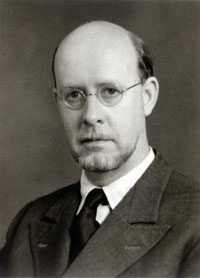
|
|
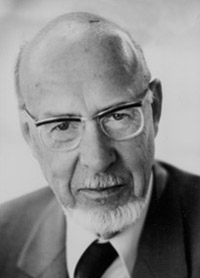
|
Titus Burkhardt in 1950
|
|
Perennialist author Titus Burkhardt in later life
|
| |
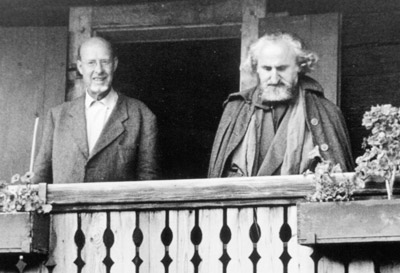
|
Titus Burckhardt with Frithjof Schuon in Switzerland in the 1950s. These two major Perennialist/Traditionalist writers had been friends since childhood.
|
| |
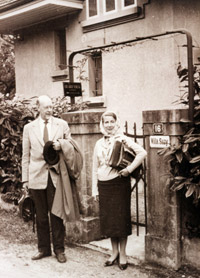
|
|
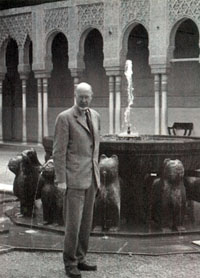
|
Mr. and Mrs. Titus Burckhardt in Pully, Switzerland, in 1950
|
|
Perennialist author Titus Burkhardt in Granada, Spain, in 1968
|
| |
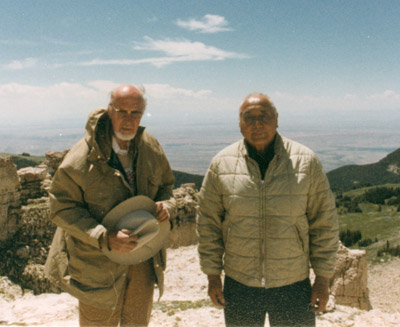
|
Titus Burckhardt with Crow Sun Dance Chief and Medicine Man Thomas Yellowtail in 1979
|
|
|
•
This slideshow combines images from Burckhardt's book of this title with images of Christian art, also from the book:
What are the "Foundations of Christian Art?"
|
•
Titus Burckhardt was one of the most important contributors to the traditional understanding of "sacred art." This slideshow gives some good background to essential concepts:
What is Sacred Art?
|
|
Other Titus Burckhardt books in English are offered through Fons Vitae publishing. To see their Titus Burckhardt series, click here, and then click on the books. Some descriptions have excerpts from the books, and there are interesting quotes about Burckhardt as well.
|
|
|
|
|
|